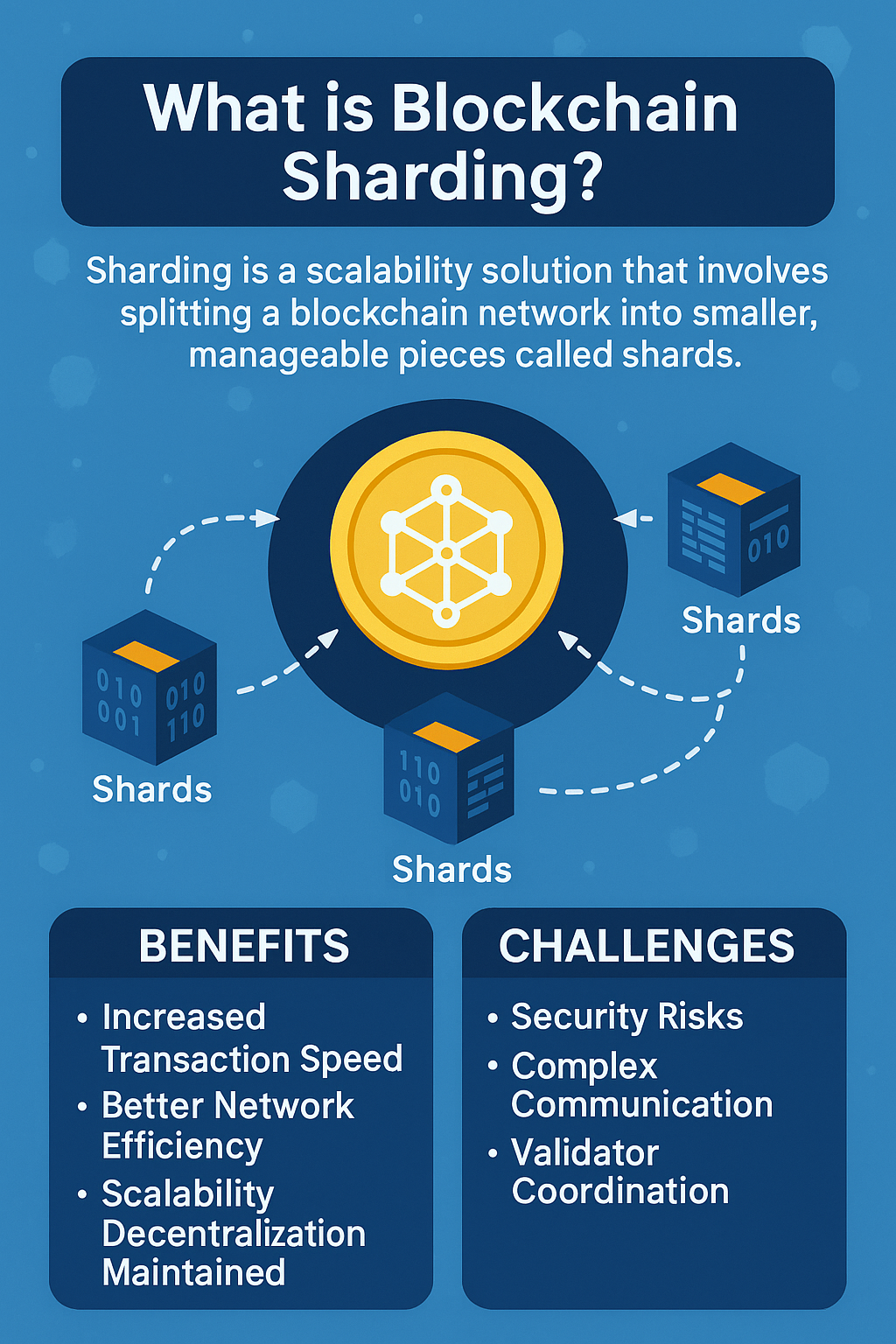What is Blockchain Sharding? A Beginner’s Guide to Scalability Solutions
Blockchain technology is revolutionary, but it faces a major challenge — scalability. As more users join the network, the system can become slower and more expensive to use. Sharding is a promising solution to this problem.
What is Sharding in Blockchain?
Sharding is the process of splitting a blockchain network into smaller, manageable pieces called shards.
Each shard contains its own data, transaction history, and smart contracts. Instead of every participant maintaining a copy of the entire blockchain, they only maintain information relevant to their shard.
This division reduces the computational burden, allowing the network to process many transactions simultaneously, significantly boosting speed and efficiency.
How Sharding Works
- Shards Operate Independently: Each shard handles its own transactions and smart contracts.
- Validator Assignment: Validators are assigned to different shards to verify transactions within that shard.
- Cross-Shard Communication: If transactions span multiple shards, special protocols ensure they are completed safely and accurately.
Through this method, sharding distributes the workload across the network, making it scalable without sacrificing decentralization.
Benefits of Blockchain Sharding
- Increased Transaction Speed: Multiple shards can process transactions at the same time.
- Better Network Efficiency: Reduces congestion, leading to lower fees.
- Scalability: Supports the addition of more users and applications without slowing down.
- Decentralization Maintained: Sharding keeps the blockchain decentralized by distributing validators.
Challenges of Sharding
- Security Risks: Small shards could be more vulnerable to attacks.
- Complex Communication: Managing transactions between shards is technically complex.
- Validator Coordination: Requires strong systems to assign and rotate validators securely.
Popular Blockchains Using Sharding
- Ethereum 2.0: Plans to implement sharding to improve its performance.
- NEAR Protocol: Already uses sharding for better scalability.
- Zilliqa: One of the first blockchains to use sharding successfully.
Final Thoughts
Sharding offers an exciting pathway to making blockchains faster, cheaper, and more scalable. As more projects experiment and improve sharding techniques, it will play a crucial role in blockchain mass adoption.
Take a break and recharge!
Play the Flutter Bees
Tap to relieve stress in the clicker game or defend your hive in the bee defense mode!
Simply watching your bees work will increase your points and help you complete game tasks, making your mind fresher and more focused!






Post Comment